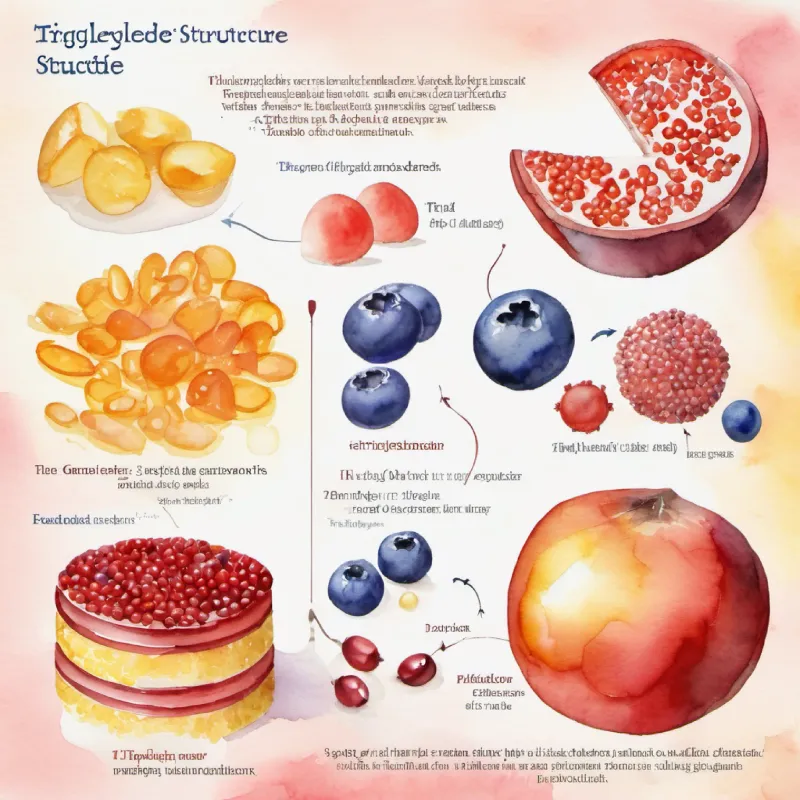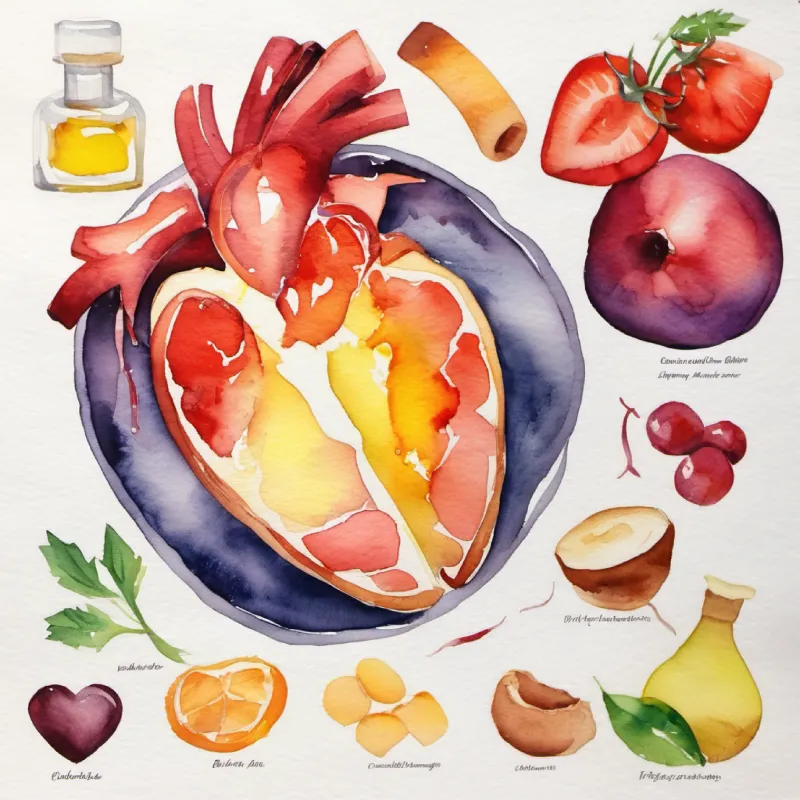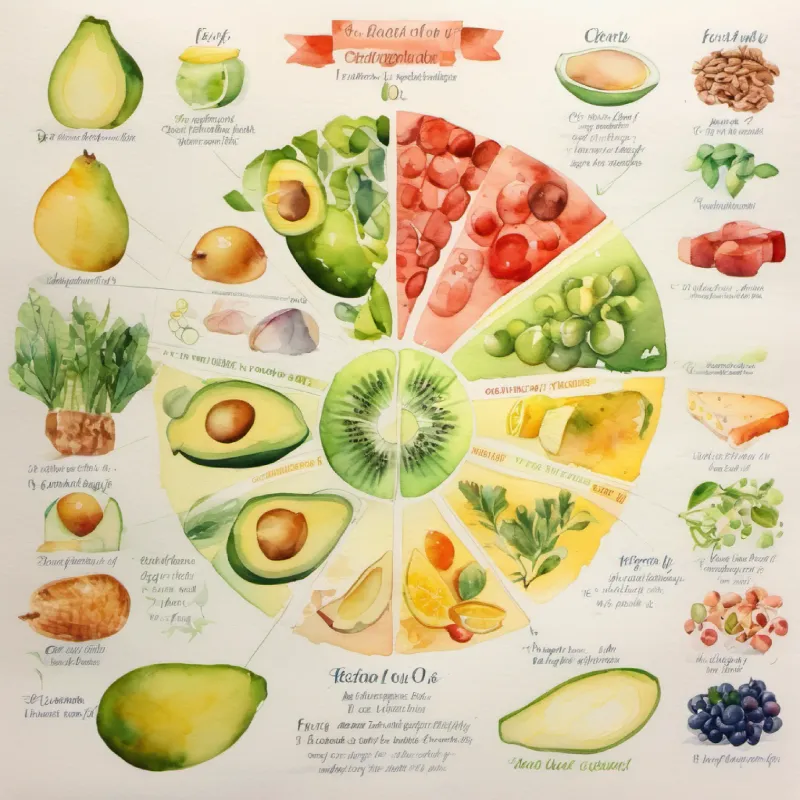Once in the bustling city of Metabolia, there stood a grand School of Life Sciences, a place where future healers and researchers came to learn the art of medicine. Within its walls, an eager group of students gathered around Professor Lipo, renowned for her expertise in understanding the body's fuel. 'When we talk about fats, we aren't just discussing nutrition; we're unraveling the secrets of energy and life!' she exclaimed, her eyes sparkling with enthusiasm.
Fats play a crucial role in providing energy for the body.

Professor Lipo's classroom resembled the inner workings of a human cell, with vivid illustrations of molecular structures adorning the walls. 'Fats, or lipids as we scientists call them, are more than just a part of your diet,' she began, pointing to a diagram of a triglyceride. 'Let's explore their structure.'
Fats, or lipids, contain structures called triglycerides.

'Triglycerides,’ Professor Lipo elucidated, 'are made of one glycerol molecule linked to three fatty acids. This trio is vital for storing energy, insulating us, and protecting our precious organs.' She highlighted the bonds on the diagram, making each one clear.
Triglycerides consist of glycerol and fatty acids, integral for energy storage.

The walls of Metabolia's School of Life Sciences transformed, projecting animations of saturated and unsaturated fats. 'Notice the difference in their structures?' asked Professor Lipo. 'Saturated fats have no double bonds, making them solid at room temperature, while unsaturated fats have one or more, making them liquid.'
Saturated fats are solid at room temperature, unlike unsaturated fats.

Consuming healthy fats is critical for maintaining good health.

A student asked, ‘But Professor, how do fats move inside our bodies?’ Smiling, Professor Lipo drew lipoproteins on the board. ‘They are our lipid taxis, combining fats with proteins to travel through the water inside us.’
Lipoproteins transport fats in the water-based environment of the bloodstream.

'Cholesterol is also a lipid,' Professor Lipo added, 'and while often misunderstood, it is essential for our cells and hormones. Our body makes what we need, but the balance can be tipped by dietary choices,' she advised with a measured tone.
Cholesterol, a type of lipid, is vital for cellular function and hormone production.

Illustrations of omega-3 and omega-6 fatty acids came into view. 'These polyunsaturated fats are essential; our bodies can't make them,' Professor Lipo remarked. 'Found in seeds, nuts, and fish, they play a role in brain health and reducing inflammation.'
Omega-3 and omega-6 are essential fats crucial for brain health and reducing inflammation.

'Now, remember the ketone bodies?' Professor Lipo asked. 'When carbohydrate sources are scarce, fats break down into these bodies to fuel our brain and muscles.' The class nodded, intrigued by the body's adaptability.
Ketone bodies are produced from fats and provide energy when carbohydrates are low.

Waves of understanding washed over the students as Professor Lipo concluded, 'Fats are more complex and necessary than many assume. They are not only a source of energy but also play a pivotal role in our overall physiology.' The class applauded, ready to embrace a future where nutrition and medicine intertwined.
Fats are essential, involved in energy production and other physiological roles.
